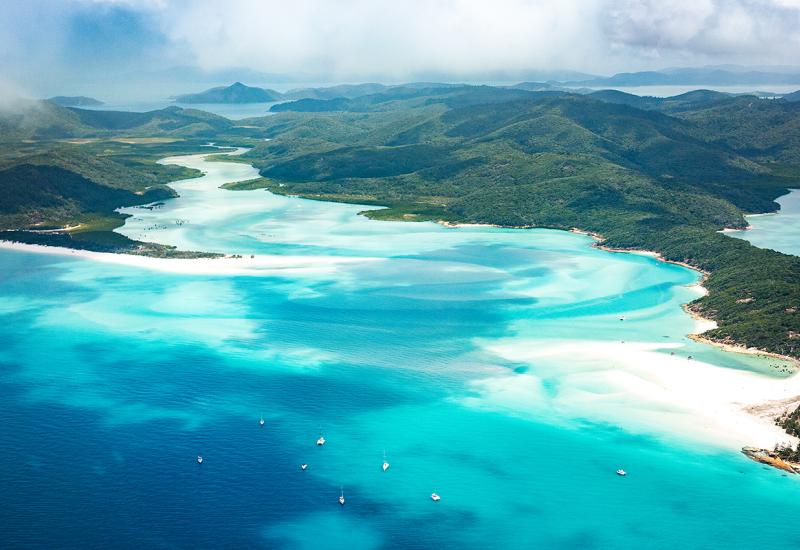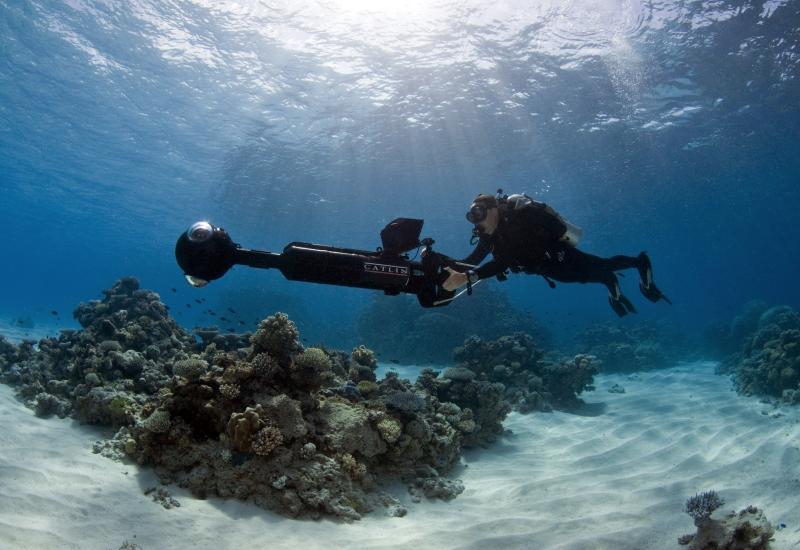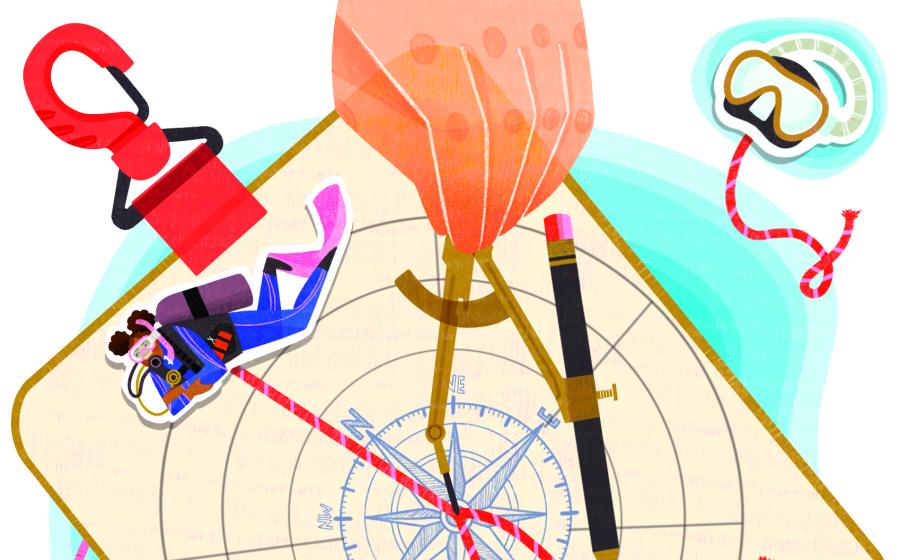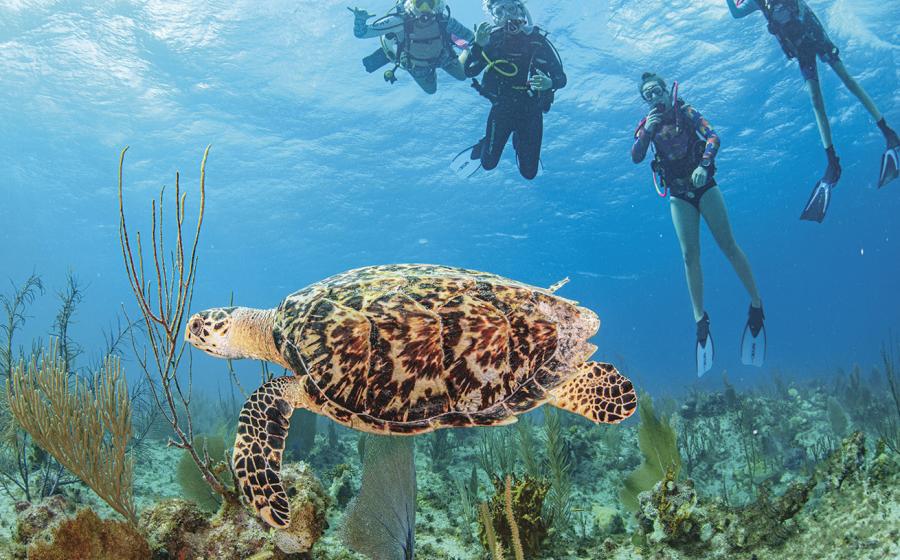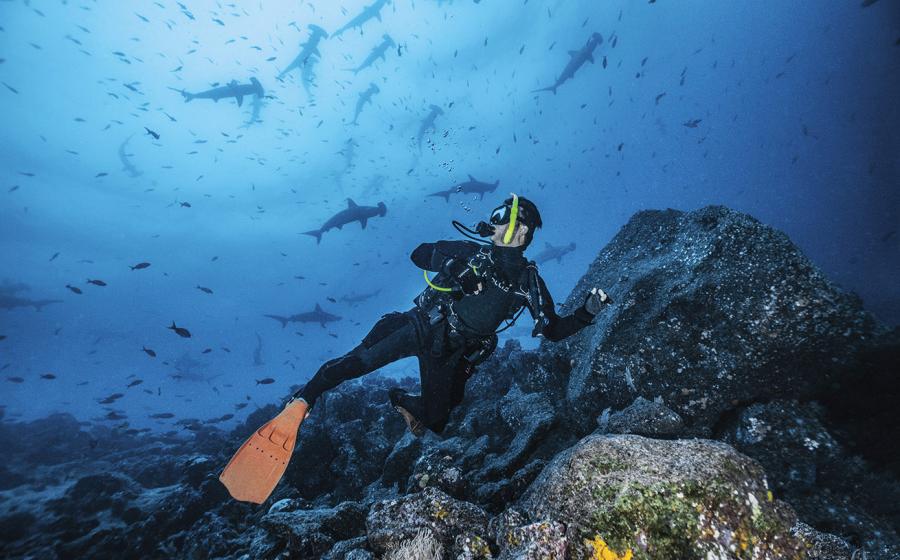10 Sharks Scuba Divers Need To Protect
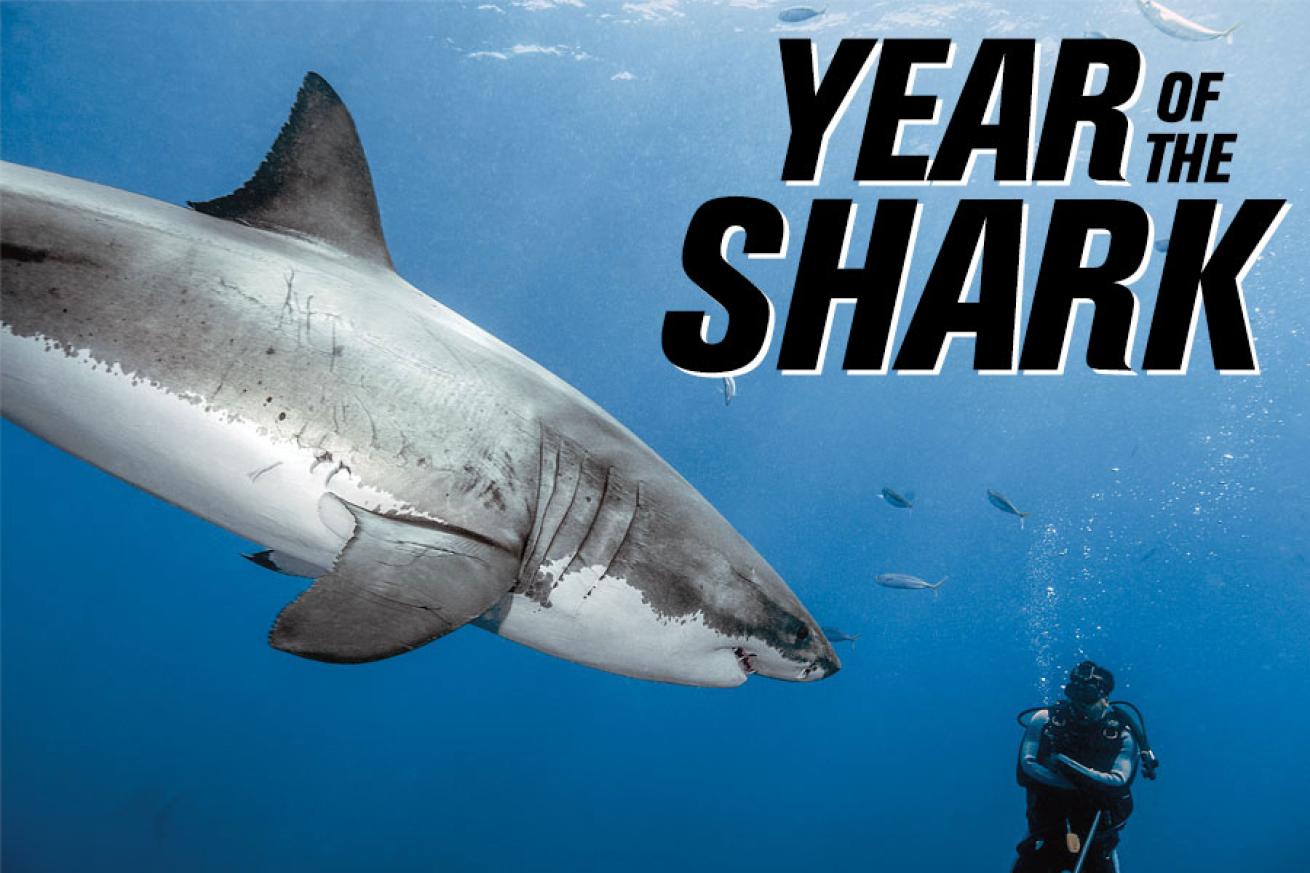
Daniel BotelhoWe've got an ocean full of good reasons why divers should rally behind these beautiful fish. No. 1: They need us. Here, a great white shark.
Scuba divers may be more aware of the threats facing sharks — but we also feel helpless about what we can do. It’s a sobering statistic: Up to 25 percent of the world’s sharks and rays are threatened with extinction, according to the IUCN Shark Specialist Group (SSG). Using the IUCN Red List of Threatened Species criteria, the SSG says that of the 1,041 species assessed, 107 rays and 74 sharks are classified as threatened.
Because they grow slowly and produce few young, both sharks and rays are susceptible to overexploitation — including overfishing from targeted fishing, bycatch and finning. Thanks largely to compelling arguments from the diving community, we’re making progress to ensure that these animals receive the conservation attention they desperately need. While our work in recent years represents terrific progress, the IUCN study reminds us that these threatened species, and closely related ones — such as guitarfish, sawfish, skates and stingrays — also need our attention.
“Significant policy strides have been made over the past two decades, but effective shark and ray conservation requires a dramatic acceleration in pace as well as an expansion of scope to include all shapes and sizes of these exceptional species,” says Sonja Fordham, IUCN SSG deputy chair and president of the Washington, D.C.-based Shark Advocates International, a project of the Ocean Foundation.
Healthy shark and ray populations are priceless. Project AWARE and other conservation agencies work every day to make strong arguments for change, but we need your help. Let’s truly make this the year of the shark — together.
Love sharks? So do we. For more, visit the Sharks section of our website.
Lemon Shark (Negaprion brevirostris)
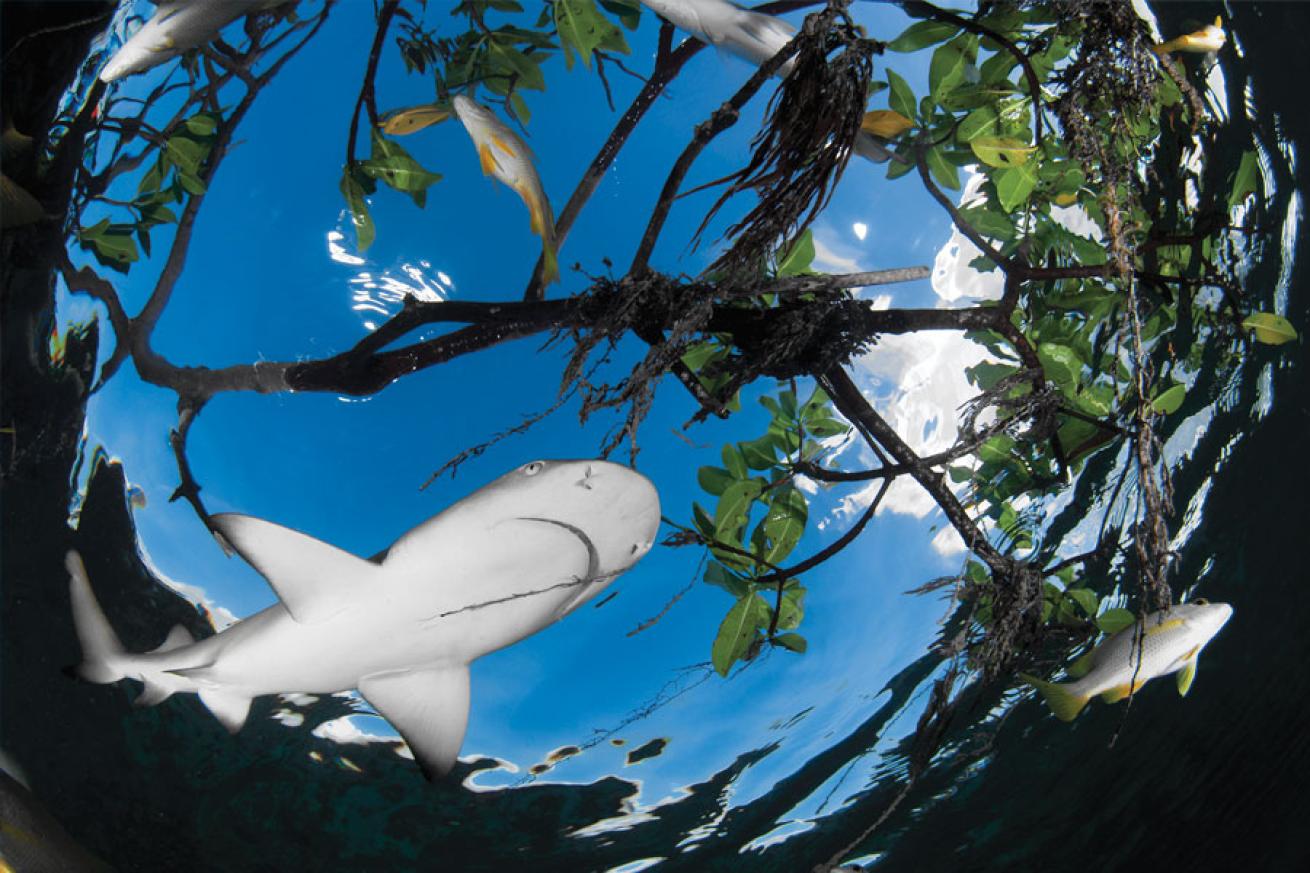
Shane GrossLemon Shark
IUCN STATUS: Near Threatened
Although I wouldn’t ordinarily describe a shark this way, “cute” is the word that pops to mind when talking about baby lemon sharks. Their incredibly flexible, 2-foot-long bodies floppily weave in and out of mangrove roots as they search clumsily for food. Sometimes they accidentally bump into a root or almost get stuck under a tree. And although it’s odd to think of sharks in trees, this is the Bahamas — Eleuthera, to be specific — and there are sharks everywhere. In only 6 inches of clear, calm water surrounded by mangroves, there can be three to eight sharks in sight at any given moment. Get Zen with the island heat, ever-present mosquitoes, and generally shy nature of lemons (they like to keep a 4-foot buffer from any camera, it seems), and this is the easiest shark “dive” in the world. — Shane Gross
DIVE THIS NOW: valentinesdive.com
DID YOU KNOW? Lemons tend to feed on and stalk species that are slower and more easily captured — such as parrotfish and mojarras, which employ camouflage rather than flee a predator.
CAMERA SPECS Camera Nikon D90 / Housing Aquatica / Lens Tokina 10-17mm / Strobes Sea & Sea 110a / Settings f/16, 1/250 sec, ISO 100
Blue Shark (Prionace glauca)
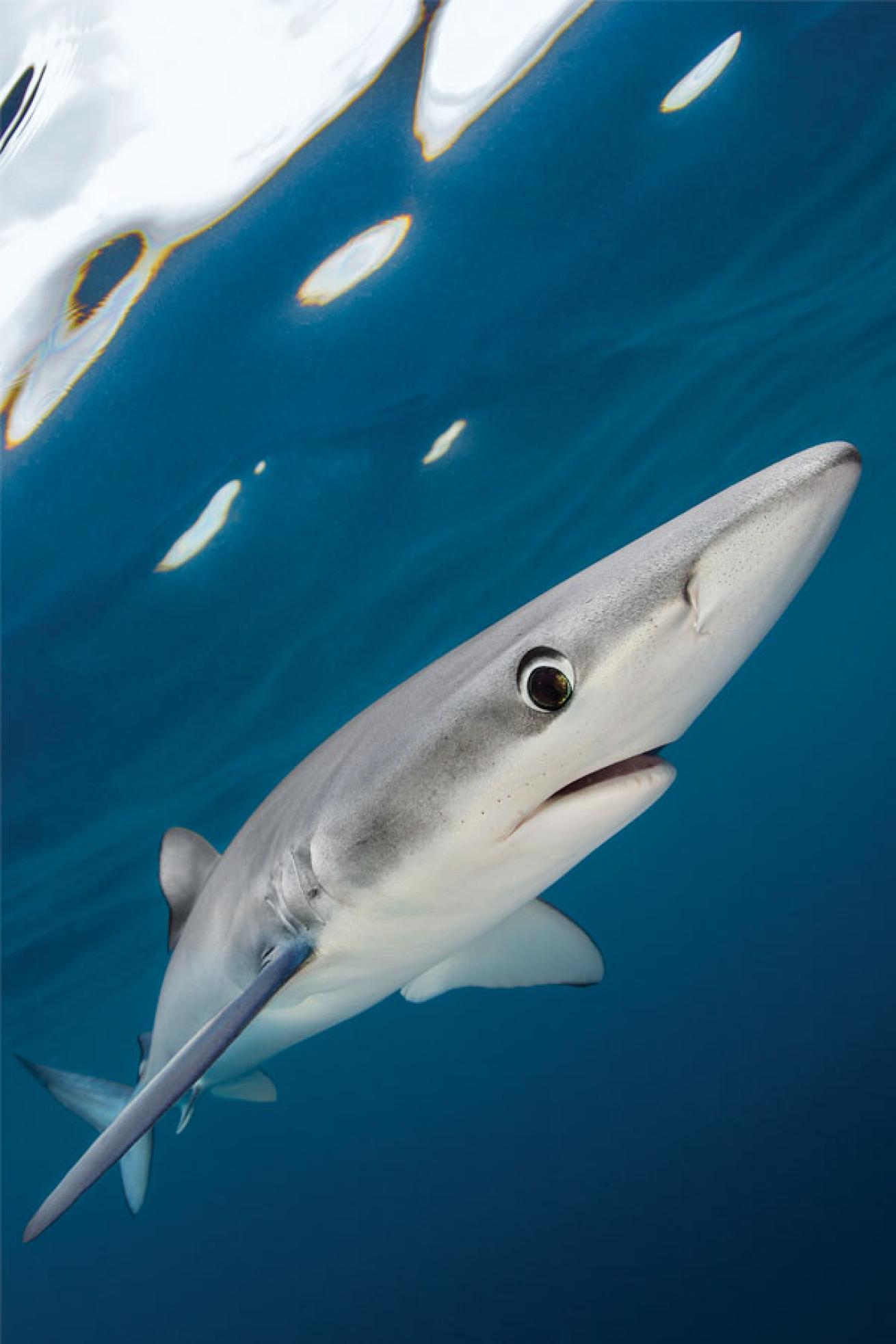
Alex MustardBlue Shark
IUCN STATUS: Near Threatened
Few experiences are more rewarding when diving than seeing something special on a local dive. So for me, plunging into the clear waters off the southwest tip of England and finding myself face to face with blue sharks was a true highlight of my diving career. Blues have the same unnerving confidence as that other great pelagic shark, the oceanic whitetip. And even though these British blue sharks were merely youngsters, they approached and circled me with total confidence, watching my every movement with their large, jet-black eyes. Their elegant proportions complement the effortless way they scythe through the sea with a gentle, curvy rhythm. The bright-blue pigment on their back almost glows in the natural light, as indelible as my memory of the encounter. — Alex Mustard
DID YOU KNOW? Blue sharks migrate long distances, such as from New England to South America, and are noted for large litters of 25 to over 100 pups.
CAMERA SPECS Camera Nikon D4 / Housing Subal ND4 / Lens Sigma 15mm fisheye and Kenko 1.4x teleconverter / Strobes Inon Z240
Great Hammerhead Shark (Sphyrna mokarran)

Brandon ColeGreat Hammerhead Shark
IUCN STATUS: Endangered
An easy-access site for reliable encounters with the elusive great hammerhead shark has just blipped onto the diver’s radar. Every year, from January to March, the sharks cruise along Hammerhead Highway, right offshore of Bimini Island in the Bahamas. I’m kneeling in the sand at 20 feet, and I can hardly believe the face staring back at me through my camera’s viewfinder. After decades of envisioning this moment in my mind’s eye, the time is now; the opportunity to take the pictures I’ve always dreamed about is real — as real as the 10-foot shark circling me only a few feet away, a remarkable mix of monster and myth, all angles and shadows and sharp-pointed fins, alien and beautiful. — Brandon Cole
DIVE THIS NOW: biggameclubbimini.com
DID YOU KNOW? Great hammerheads feed on rays and other sharks; the species also can be cannibalistic.
CAMERA SPECS Camera Canon 5D Mark III / Housing Seacam / Lens Canon 8-15mm fisheye / Strobes Ikelite DS161 / Settings f/11, 1/250 sec, ISO 200
Broadnose Sevengill Shark (Notorynchus cepedianus)

Andy MurchBroadnose Sevengill Shark
IUCN STATUS: Data Deficient
If it were up to me, this is the first shark I would show new divers. Within the relative safety of South Africa’s kelp forests — where white sharks rarely venture — this marine jungle is ruled by broadnose sevengill sharks. Impressive in size but blessed with a docile demeanor and enigmatic smile, these sharks make wonderful photo subjects. This was one of two-dozen sevengills that I saw on a single dive at Miller’s Point near Simon’s Town in South Africa. The sharks were casually weaving through the bamboo kelp in search of catsharks and other tasty snacks. The swells were down, so visibility in the forest was excellent. I could see the sharks from about 65 feet away, but as long as I kept relatively quiet, they would swim past me within touching distance, veering off at the very last second, as if they had only just realized I was in their way. — Andy Murch
DIVE THIS NOW: piscesdivers.co.za
DID YOU KNOW? These sharks are mainly benthic in nature, cruising along the seafloor and making an occasional foray to the surface.
CAMERA SPECS Camera Nikon D7000 / Housing Aquatica AD7000 / Lens Tokina 10-17 @ 17mm / Strobes Inon 2400 / Settings f/11, 1/100 sec, ISO 800
Blacktip Reef Shark (Carcharhinus melanopterus)
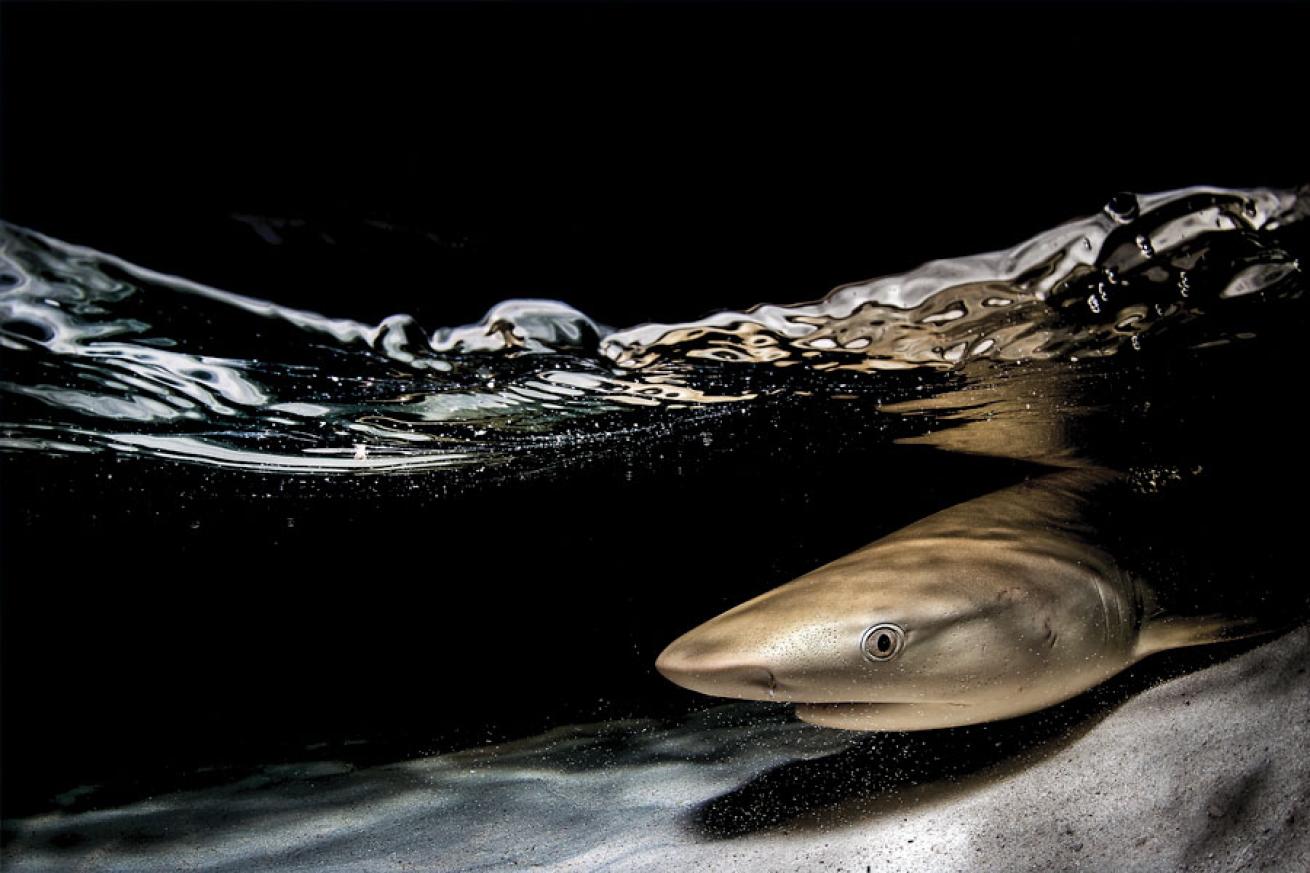
Imran AhmadBlacktip Reef Shark
IUCN STATUS: Near Threatened
It’s one of those nights when sleeping is not an option. The shimmering moon and stars set a magical mood in remote Aldabra Atoll, designated a World Heritage Site by UNESCO in 1982. A wild idea creeps into my mind, and my imagination goes wild. What if I light the shallows like a studio? Blacktip sharks are so curious, I refer them as my kitty cats. You don’t have to feed them; just tap the water, and they come racing toward you. I need to time my shot just right to get them into my makeshift studio. We know that working with models is never easy, but these sharks are eager to pose — finding the right pose is another question altogether. My first few tries are mayhem, but once I get the hang of it, everything just falls into place. Three months later, it’s now the cover of my book, Seychelles Unexpected Treasures. — Imran Ahmad
DIVE THIS NOW: sif.sc
DID YOU KNOW? Blacktip reefies have a home range of around .21 square mile, among the smallest of any shark species.
CAMERA SPECS Camera Nikon D4 / Housing Seacam / Lens Nikon 16mm f/2.8 / Strobes Ikelite 161 with CM diffusers / Settings f/16, 1/8 sec, ISO 200
Silky Shark (Carcharhinus falciformis)
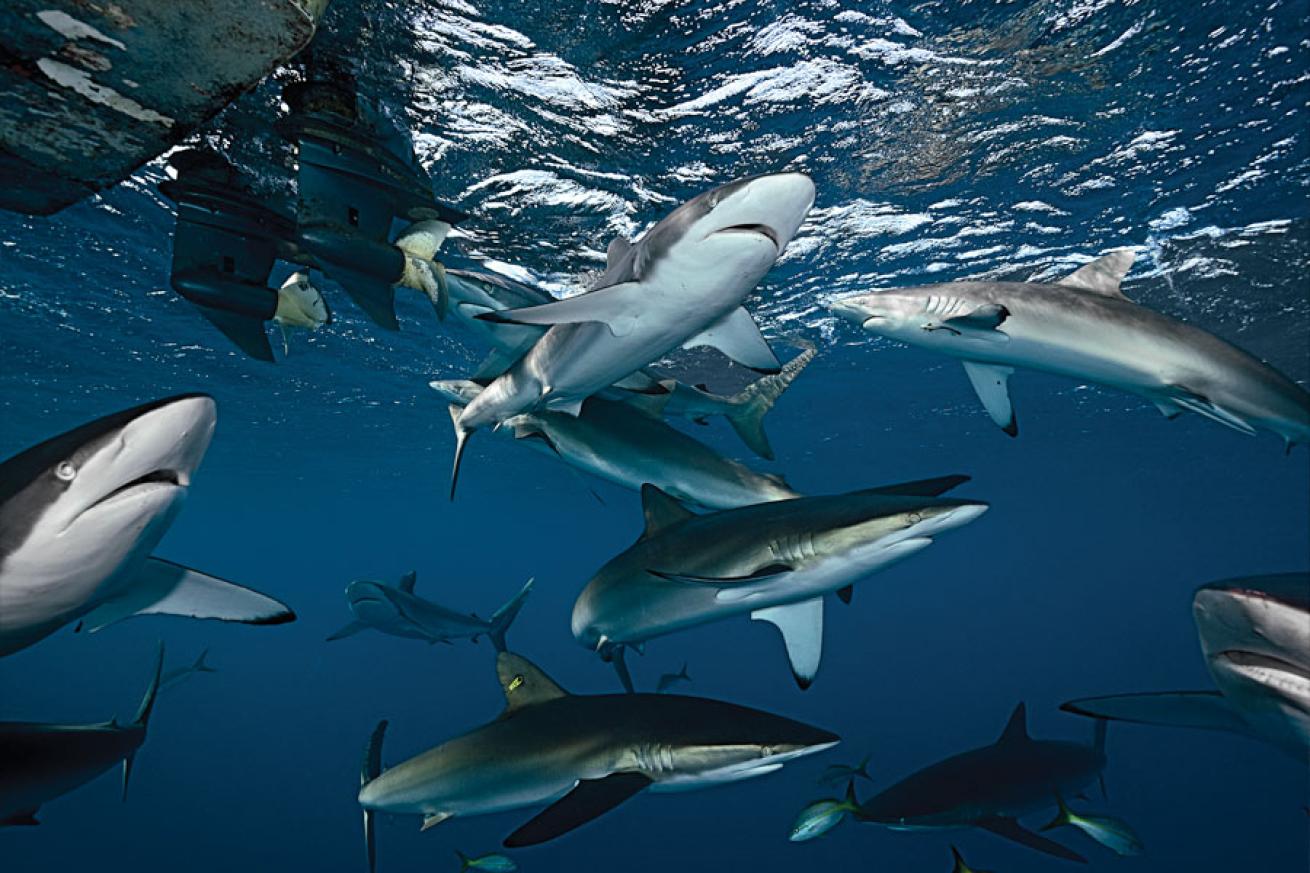
Scott JohnsonSilky Shark
IUCN STATUS: Near Threatened
Jardines de la Reina (Gardens of the Queen), Cuba, is one of the few places left in the world where you can still dive with silky sharks. Longline fishing and shark finning have decimated shark populations worldwide, especially species that live higher in the water column, like silkies. But years of vigilant protection of this marine reserve have given me the chance to dive with dozens of silkies. The rest of the group leaves to explore the area while I hang 30 feet or so underneath our two skiffs, eagerly awaiting the promised sharks. My wait is short, as sun-dappled silkies suddenly appear from all directions as if called to a meeting. I slowly rotate as the curious sharks pass within inches. My private rendezvous with the silkies continues for 40 minutes; finally, they follow me to the surface and swirl around the dive ladder as if saying goodbye. — Scott Johnson
DIVE THIS NOW: cubandivingcenters.com
DID YOU KNOW? Almost every tuna school has silky sharks trailing behind; in the eastern Pacific, silkies inflict enough significant damage to tuna-fishing gear and catches that fishery workers have nicknamed them the “net-eating shark.”
CAMERA SPECS Camera Nikon D800 / Housing Aquatica AD800 / Lens Nikon 16-35mm FX / Strobes Sea & Sea YS-250 / Settings f/10, 1/160 sec, ISO 200
Tiger Shark (Galeocerdo cuvier)

Brandon ColeTiger Shark
IUCN STATUS: Near Threatened
There’s shark diving, and then there’s Tiger Beach shark diving. This shallow sandbank off Grand Bahama Island has completely redefined quality bottom time and photo ops when it comes to these instantly recognizable sharks. Old salts might remember a time, pre-Tiger Beach, when it was necessary to travel across the world for a slim chance to see a single tiger, all the while praying that the animal was bold enough to come in for a close-up. Now, liveaboards leaving Florida and land-based operators in the Bahamas can drop you into a guaranteed Sharknado like no other. Imagine up to six beefy tigers and 24 snaggle-toothed lemon sharks swirling about you on dives lasting two hours. Steel your nerves, choose your widest lens, and prepare to be shoulder-to-fin with apex predators. — Brandon Cole
DIVE THIS NOW: stuartcove.com
DID YOU KNOW? Nicknamed “the garbage can of the sea,” a tiger will swallow virtually anything it encounters — automobile license plates, oil cans, tires, and baseballs, as well as horses, goats, dogs, and cats.
CAMERA SPECS Camera Canon 1Ds Mark II / Housing Seacam / Lens Canon 15mm fisheye / Strobes Ikelite DS160 / Settings f/9, 1/250 sec, ISO 200
Great White Shark (Carcharodon carcharias)
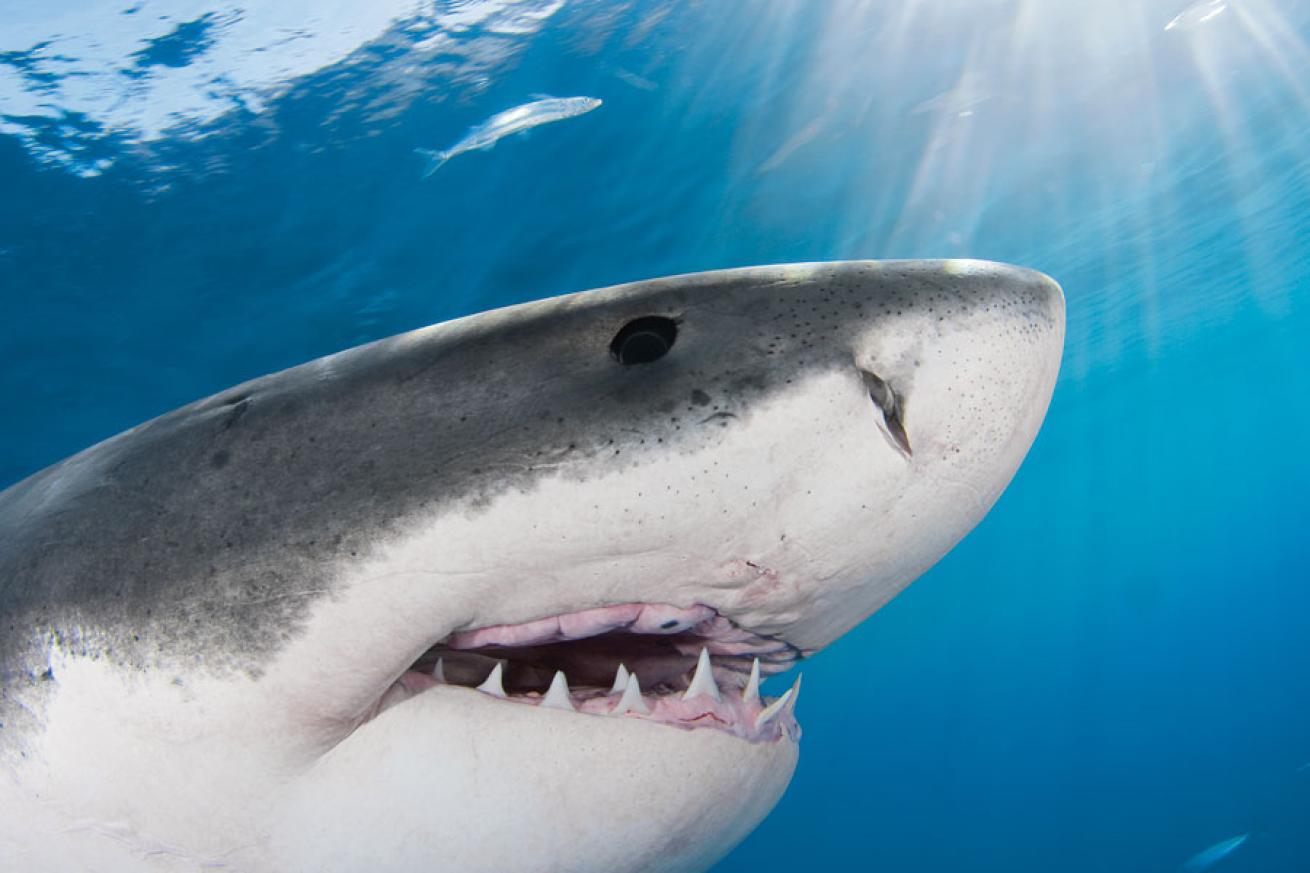
David FleethamGreat White Shark
IUCN STATUS: Vulnerable
I’ve photographed great white sharks in South Australia, South Africa and off Guadalupe Island, where I captured this image. Here, the sun sets behind the island itself, and in the late afternoon, the light spreads into fascinating rays as it streams through the surface of the water. Guadalupe has become the premier location for shooting these spectacular animals in clear, blue water; in South Australia, you’ll find breaching great whites, but the visibility can’t compare with the crystalline seas around this remote island 150 miles southwest of Ensenada, Mexico. It’s impossible to predict how close a shark will approach the cage or when it will happen. When a shark does come near, it can happen so quickly that there’s little time to even to catch your breath. Just know that if you’re coming to Guadalupe, this powerful apex predator will put on a spectacular show — whether you’re ready or not. — David Fleetham
DIVE THIS NOW: nautilusexplorer.com
DID YOU KNOW? The lifespan of great whites is thought to be 70 years or more, making it one of the longest-lived cartilaginous fish currently known.
CAMERA SPECS Camera Canon EOS Rebel XTi / Housing Ikelite / Lens Canon 10-17mm / Strobes Two Ikelite 125 / Settings f/13, 1/80 sec, ISO 200
Whale Shark (Rhincodon typus)
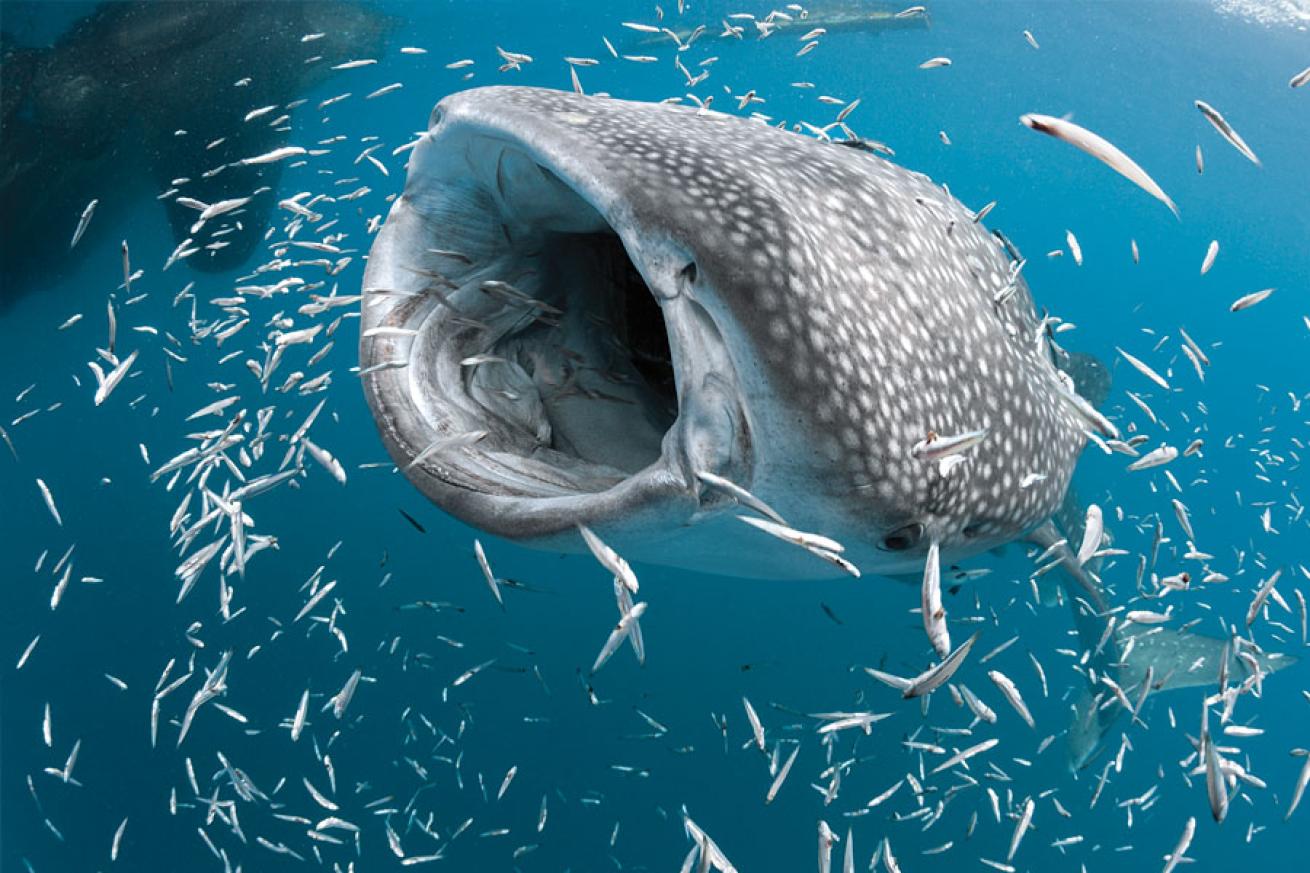
Reinhard DirscherlWhale Shark
IUCN STATUS: Endangered
The biggest fish in the sea — literally — feed on some of the smallest. Whale sharks are normally plankton feeders, but the abundant food supply in Cenderawasih Bay in West Papua, Indonesia, keeps them nearby. Local Indonesian fishermen fish with hand lines from fixed boats, called bagans. To attract trevallies and groupers, they throw small baitfish into the sea. Whale sharks swim underneath the fishing boats and await the banquet, sucking the multitudes of fish into their giant mouths. I strike a bargain with a fisherman to snorkel close to his bagan. Three whale sharks are circling directly below, when suddenly the biggest of the three speeds up. With his mouth wide open, he sucks hundreds of fish down his throat. I’m so excited that I scream into my snorkel, but it doesn’t disturb the whale sharks, who carry on with their dinner. — Reinhard Dirscherl
DID YOU KNOW? Worshipped as a deity in Vietnamese culture, the whale shark is called Ca Ong, which literally translates to “Sir Fish.” In the Philippines, it is featured on the reverse side of the 100-peso bill.
CAMERA SPECS Camera Nikon D700 / Housing Subal / Lens Tokina 10-17mm / Strobes Inon Z220 / Settings f/11, 1/160 sec, ISO 1000
Bull Shark (Carcharhinus leucas)

Doug PerrineBull Shark
IUCN STATUS: Near Threatened
We knelt on a white, sandy bottom in around 50 feet of water. The bull sharks that we’d come to see showed only mild curiosity in the divers, focusing all their attention on the feeder, Phantom Divers owner Jorge Loria. This annual aggregation of pregnant females off Playa Del Carmen in the Riviera Maya is in danger of disappearing due to fishing pressure. Divers like Loria hope to demonstrate that these beauties are more valuable alive than dead. — Doug Perrine
DIVE THIS NOW: phantomdivers.com
DID YOU KNOW? Bull sharks have a bite force of up to 1,300 pounds, pound for pound the highest among all investigated cartilaginous fishes.
CAMERA SPECS Camera Nikon D700 / Housing Subal / Lens Tokina 10-17mm / Strobes Inon Z220 / Settings f/11, 1/160 sec, ISO 1000
Want to get involved with shark conservation? Visit the Project AWARE website and find out how you can make a difference:http://www.projectaware.org/
Love Shark Week? Sharks deserve our attention more than one week a year — check out our featured sharks and the threats that are facing them:
Interesting Facts about Ornate Wobbegong Sharks
Interesting Facts about Broadnose Sevengill Sharks
Interesting Facts about Horn Sharks
Interesting Facts about Thresher Sharks
Interesting Facts about Great White Sharks
Interesting Facts about Oceanic Whitetip Sharks



